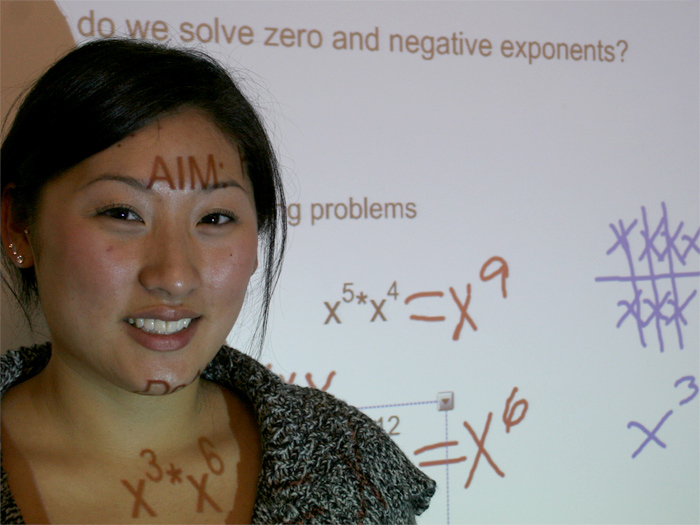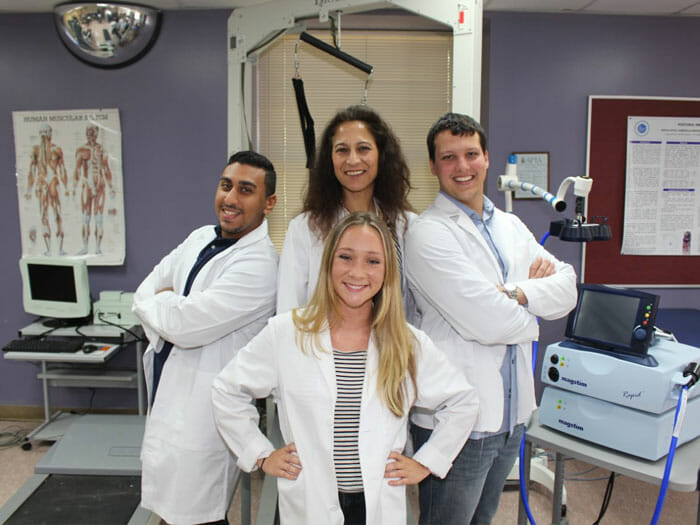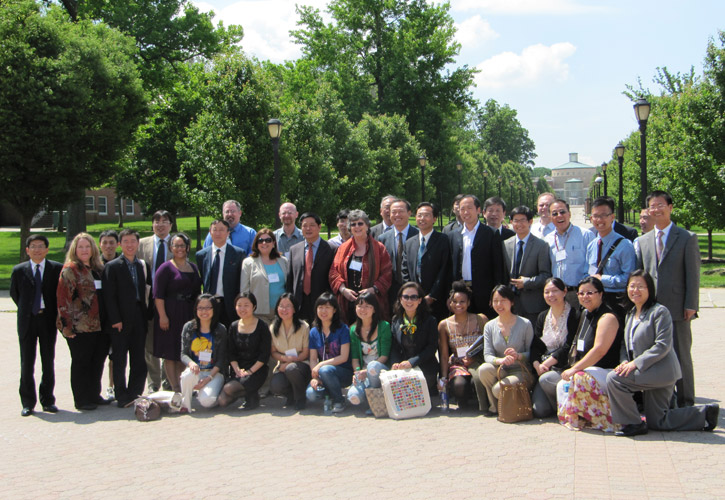The exceptional efforts of the College of Staten Island to train tomorrow’s teachers recently received a significant boost by way of an $839K National Science Foundation (NSF) Robert Noyce grant.
The funding, announced Tuesday by New York State Governor David Paterson, builds upon the success of the College’s highly successful Teacher Academy program. Renamed the Teacher Education Honors Academy, the program maintains its mission to produce excellent teachers of math and science who will teach in high-need schools.
“The Robert Noyce grant acknowledges CSI’s history of success in producing first-quality teachers for our school system,” says Dr. Jane Coffee with CSI’s Mathematics Department. Coffee is co-author of the grant proposal with Dr. Susan Sullivan and Dr. Irina Lyublinskaya from the Education Department.
The Teacher Academy at CSI began in 2006 with support from the Petrie Foundation. The success of the program was cited by the NSF in awarding the Noyce grant. The major difference between the two programs is that a student enters the Teacher Education Honors Academy as a freshman or sophomore, and transitions into the Noyce program as a junior.
Coffee explains that Noyce funding is almost entirely for student scholarships, and that students in the program will receive $11K a year to pay for tuition, fees, work done in schools, laptop, books, and living expenses. She adds that students must also maintain a 3.0 grade point average in the program and for each year they receive support and they have to commit to teach two years in a high-need middle or high school in the United States.
Coffee also reports that the Academy is on track to double the number of majors in math and science who will graduate from CSI with initial teaching certification.
Marianne Orla, an academic adviser with the two-stage program, outlines how students progress through the Academy. “From the very first semester that they’re in the program they work one day a week in a Staten Island middle or high school. They start as observers in the classroom, but they progress through the continuum of professional development of math and science educators. Ultimately, they’re teaching lessons in the schools. That, I think, is what actually reinforces the idea that they want to be teachers. We’ve had some talks with some of the Academy students and said to them ‘are you sure that you want to be in this program?’ because they have to sign a commitment letter. What they say is ‘I really love teaching’.”
The students are certainly enthusiastic about the Academy and the unique opportunity that it gives them to teach in actual classrooms to pupils in borough high schools (at present, New Dorp, Curtis, CSI High School for International Studies, Port Richmond, William A. Morris IS 61, Dreyfus IS 49).
CSI Junior Maria Pellegrino says, “It’s amazing. When we’re in our education classes, students just sit there and observe the teachers. But, because we’re in the Academy, we can actually get up and teach, kids are asking us questions.”
Raechel Strobel, also a junior, adds, “It’s a lot of good, hands-on experience and we get a lot of feedback from the collaborating teachers.”
Finally, senior Alvin Hillary says that his students are “really excited” to see him, hoping that he’ll be teaching class when he arrives at their school.
In fact, last spring, Pellegrino, Strobel, and Hillary, as well as other students had the chance to show off their pedagogical skills at the third annual Teacher Academy Conference, where area educators and the students’ parents were treated to lessons that the students prepared and taught. According to Coffee and Orla, not only were the attendees amazed by the teaching prowess of these budding educators, they were also surprised that they skillfully employed technology, like interactive SMART boards, to teach their lessons.
The Academy is producing enthusiastic, quality teachers, who are attracting lots of attention, but Coffee notes, it also makes a significant contribution to the local community and economy. “This program is not just about undergraduate education; it’s about getting students employed in the schools.”
Whereas CSI students mostly come from Staten Island and Brooklyn, Coffee adds “they stay here because they want to be here and teach here.”

















